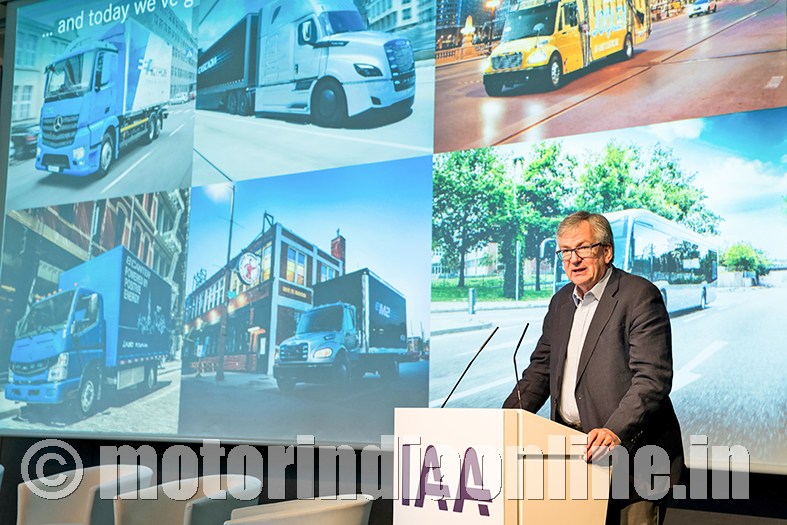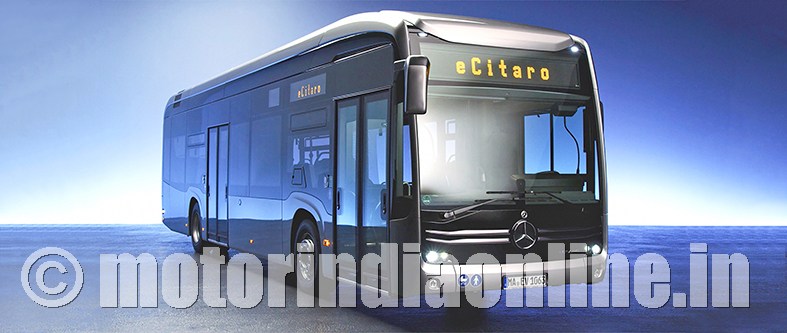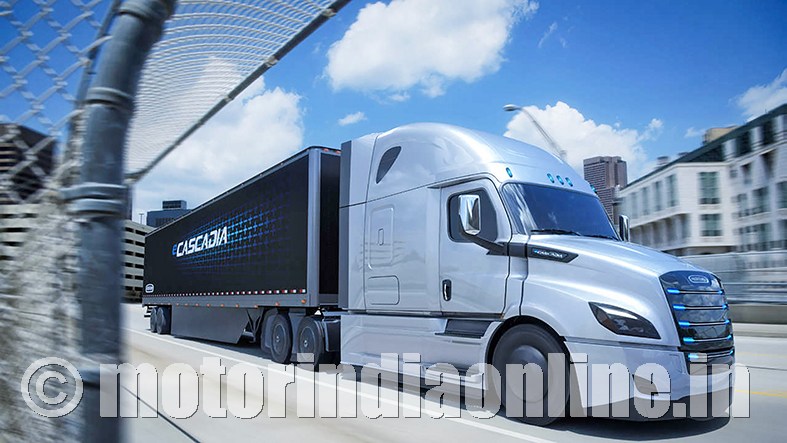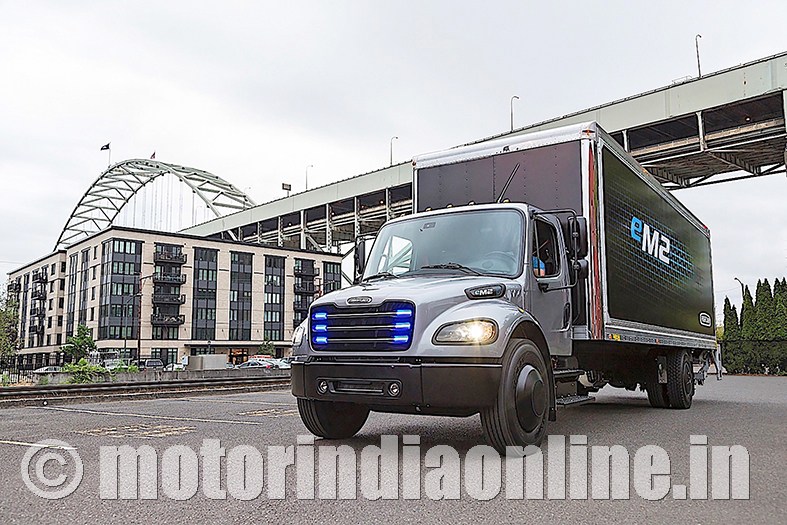Calling for lofty goals in electromobility, automated driving or connectivity, and rolling the first prototypes onto the stage is generating quick headlines and public attention in our industry. But that’s not what truly matters. Crucial to these technologies is what comes next: systematically building knowledge, gaining experience and carefully optimizing the product.
Of course, in doing so there are setbacks and it all takes patience and time. But you have to invest that time – because only then will electric, automated and connected trucks and buses really mature … and only then will they deliver the benefits our customers expect. This phase determines the sustainable success of a product.
Because the focused work toward volume production is such a quiet phase, it is easily confused with idleness. But that would be fundamentally wrong. It would be fundamentally wrong to rush from a prototype to market launch. Seriousness here clearly comes before speed – a good solution is more important than a quick fix.
Developing the best solution for our customers – in an intensive, quiet phase, which often takes several years – that’s our strength at Daimler Trucks & Buses. That’s why my remarks have the title “Electric, Autonomous, Connected – from vision to series maturity.” Because I want to show just how consistently we’ve been working on the implementation of these technologies and how far we’ve come.
This overview shows where we stood with these mega-trends two years ago at the last IAA. Today the picture looks like this. As you can see: On the one hand, we’ve added many additional products and solutions, especially for electric drives. On the other hand, we are consistently moving in the right direction – from the “Generating Headlines” phase through the “Generating Knowledge” phase to the target phase of “Generating Business.”
Let’s take a closer look at all the three technologies. First: Connectivity. With real-time data we make our trucks even more capable – both today and in the future. In 2016 we showed the full potential of the truck when it becomes the mobile data center of the logistics network. That was the vision, and since then we have consistently worked on its implementation. We did not have to start from scratch because in 2016 we already had specific services on the market.
We have significantly expanded this offering since then. Today our trucks are online in all regions. With our Truck Data Center connectivity module as a single control center. And with our Mercedes-Benz Uptime and Fleetboard services in Europe, with Detroit Connect in North America and Truckonnect in Asia. These services offer our customers a real benefit: They ensure their vehicles are where they should be – on the road, and not where they shouldn’t be – in the workshop.
With Mercedes-Benz Uptime, for example, we can install software updates via Flash Over The Air – simply while on the road and without a visit to the service facility. In addition, Uptime continuously monitors the status of the systems, thus continuously measuring the health status of the truck. For critical conditions, Uptime performs a short test and delivers, if necessary, maintenance or repair recommendations. And all of this happens very fast: the diagnostic process takes just four minutes. We are planning a similar offering for our buses – under the name Omniplus Uptime – which we will present at the IAA.
Now to the second technology of the future: Electric Drive. I am very proud that we have the broadest range of electric trucks and buses – both here and today. We’ve been working on battery-electric vehicles for a number of years and, with a series of world premieres, have demonstrated how we envision the introduction of e-mobility for trucks and buses. In our view the electrification of long-haul routes remains a challenge for the time being.
As of now we can identify viable business models, particularly in the distribution segment – that is with electric trucks and buses on the road in urban areas. We have the largest product portfolio in the industry for these applications: Our FUSO eCanter went into series production in 2017 – our light truck has long been in daily use throughout the triad, quiet and locally emission-free, and with good customer response. An innovation fleet of our Mercedes-Benz eActros will be turned over to our customers in Europe over the next few months. Our Freightliner eM2 and our Freightliner eCascadia will be put into innovation fleets in the US by the end of the year. Next year our “Jouley” electric school bus heads to the US cities in small volume.
And, as far as our Mercedes-Benz buses are concerned, we’re now taking the step from “gaining experience” to volume business. I’ve just come from our world premiere. Yesterday we presented our electric city bus Mercedes-Benz eCitaro in Mainz. The response from you and your colleagues has been very positive. Now we’ll quickly put the vehicle on the road: The first vehicles go to Verkehrsbetriebe Rhein-Neckar in the fall. Later in the year we’ll start series production at EvoBus in Mannheim where the bus was developed. We already have the first orders for our eCitaro – 15 buses go to the Berliner Verkehrsbetriebe and 20 to the Hamburger Hochbahn. Others will follow.
One important thing here: We will not just deliver our customers a vehicle. We will not leave them alone with this new technology. Because our customers have many questions – from charging batteries to maintenance and route planning. We help our customers find answers to those questions and have set up an in-house eMobility Consulting for that purpose. Together with our customers our experts analyze operational processes. Things such as vehicle configurations and the charging infrastructure are optimally tuned for the respective routes, duty cycles, topography and the required ranges.
As you can see: For electric trucks and buses, we are no longer about just words, press releases and prototypes – we are offering our customers very specific products and solutions. And we do this by consistently leveraging synergies: between trucks and buses – and also between different markets and regions. We systematically leverage the best ideas from one region and division to the benefit of all regions and all divisions.
We are now embedding this in our organization – in our new E-Mobility Group. In our E-Mobility Group we bring together our global expertise in electric trucks and buses. This will enable us to act even faster in the future and make even better use of economies of scale.
This brings me to the third technology of the future: Automation. The automated truck makes transport even safer and more efficient – not necessarily here and now, but very soon. In 2014, we showed our vision of an automated truck for the first time: our Mercedes-Benz Future Truck. Since then we’ve continued to develop it and have achieved many more milestones: in trucks with our Freightliner Inspiration Truck and our platooning tests throughout the Triad; in buses with our Mercedes-Benz Future Bus, which we presented in 2016 and for which we have expanded our automated driving with additional functions from our truck system with – for example, the control of bus stops with an accuracy of centimeters; and, of course, we’ve also introduced new assistance systems for our production vehicles – our Sideguard Assist, for example, with which we make traffic even safer for pedestrians and cyclists, and that is only available from us.
So, we’ve already made good progress on the road to automated driving, and I want to emphasize one thing: we are not taking this lightly. We are very well aware that our industry – and especially we as an industry leader – have a great responsibility here. And we take this responsibility very seriously. A system that automatically moves a 40-ton machine must be safe. Therefore, we only launch a technology to the market that has been extensively tested and proven. With regard to the 5 levels of automated driving I can therefore say: Stage 5 – completely driverless – will still take some time in our view. But at level 2 it’s different. As before there’s still a driver on board to oversee the system – and here we’re now ready to reach the target phase to Generate Business, following the “Generate Headlines” and “Generate Knowledge” phases.
With Level 2 automated trucks we can now take the step from vision to production maturity. It will not be long before we quickly roll out this technology worldwide – in major regions such as North America, Europe and Japan.
The market launch of Stage 2 is also moving along very fast because we are, again, leveraging global synergies – and will even more so in the future: In Portland, we’ve now established a Global Competence Center: Our Automated Truck Research & Development Center. This allows us to work together even better in automated driving worldwide.
Our focus on new technologies is to enable real business. For our customers and for ourselves. We have already achieved a lot here at Daimler Trucks & Buses – and we still have much more to come. In all technologies we will continue to deliver new things. And not just as a vision, but above all in series production. By carefully optimizing new products in a quiet phase.
Speech delivered by Martin Daum, Member of the Board of Management, Daimler AG, Daimler Trucks & Buses, at the VDA International Press Workshop in Frankfurt



